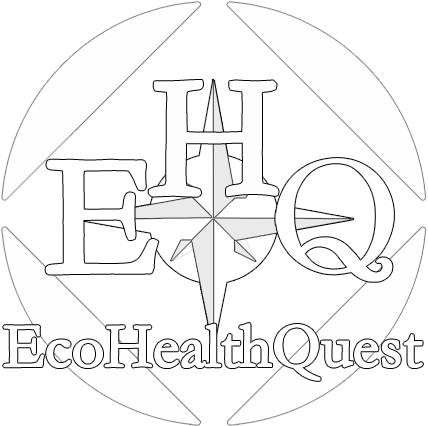…Aimed to Save Florida’s Dying
Coral Reefs
As the only living coral barrier reef in the continental United States, the Florida Keys Reef Tract is also the third largest coral barrier reef system in the world. It is Florida’s economic engine worth over $8.5 billion supporting more than 70,000 jobs that include tourism, restaurants, hotels, commercial businesses and the fishing industry, according to recent statistics.
Today, Florida’s coral reefs are facing an unprecedented, deadly and rapidly spreading coral disease outbreak that puts them at risk for extinction say scientists at Mote Marine Laboratory (mote.org) an independent, non-profit institution located in Sarasota, Florida.
Mote states that the stony coral tissue loss disease is plaguing nearly half the coral species on the Florida Reef Tract, with mortality rates frequently exceeding 80 percent. The outbreak stretches from Martin County to Key West, with potentially similar disease signs being investigated at other Caribbean reefs.
Recognizing these high stakes, scientists at Mote are raising the bar on disease research and reef restoration. As leaders within a state-federal-nongovernment Disease Advisory Committee of more than three dozen partners, Mote, as of March 2019, is undertaking the first year of its historic new Florida Keys Coral Disease Response & Restoration Initiative.
“There is no stopping this coral plaque from running its course. It is highly unlikely that our devastated coral populations will be able to execute a natural recovery on their own,” said Mote President & CEO Dr. Michael P. Crosby. “That means conservation strategies alone cannot solve this dilemma.”
Mote has proposed a bold science-based response and restoration initiative that is essential to actively assist the recovery of this ecosystem. It is a collaborative effort with the Florida Fish and Wildlife Conservation Commission (FWC), the Florida Department of Environmental Protection (DEP), the National Oceanic and Atmospheric Administration (NOAA), and many others.
“Several years ago, the future of coral ecosystems was dismal. That has now changed dramatically,” Crosby said. “When many coral scientists and environmental activists around the world saw coral bleaching events and devastating coral diseases of recent years, they concluded that it’s impossible to replace a dead 50-or 100-year old coral in a decade. I, however, contend that now is not the time for scientists to throw in the towel.” Crosby added, “Investing time and resources, and conducting world-class research into restoring coral reefs is not a choice, it is a necessity.”
Mote scientists have developed a novel micro-fragmentation and re-skinning technique that can bring back to life the massive and slow growing corals that are vital to reef building structure.
“We can do this in just one or two years instead of hundreds of years it would take nature to rebuild a reef on its own.” said Crosby,“ This is something of a Coral Lazarus Effect!”
Dr. Erinn Muller, Director and Manager of Mote’s Coral Health & Disease Research Program, explained, “We take fragments of these corals, chop them into tiny micro-fragments, and allow genetically identical micro-fragments to fuse and then re-skin the skeletons of larger corals. Micro-fragmentation accelerates their growth rate by 40-50 times what you’d see in nature.
“This method is especially powerful when scientists choose genetically diverse corals—which as a group, have a larger assortment of stress-resistant traits—and promote their best traits through controlled sexual reproduction efforts.”
Over the years, Mote scientists have raised and restored more than 43,000 corals to depleted reefs in the Florida Keys. Now, Mote is investigating whether lab-tested corals will continue to thrive once planted on the reef. This is one of many efforts overseen by a Restoration Trials Team co-led by Mote and DEP, with members from NOAA, FWC, U.S. Geological Survey, Nova Southeastern University, Florida Aquarium, Coral Restoration Foundation, The National Park Service, The Nature Conservancy and Coral Restoration Consortium.
“Ultimately, we envision that the gene bank we are creating this year at Mote Aquaculture Research Park will be the seed for our longer-term development of a Category-4 or-5 hurricane-resistant, expanded coral gene bank at that location. Ideally with every coral genotype we are able to culture they will be represented in triplicate,” Crosby said. “Mote has the knowledge, passion and vision to develop a gene bank that can host representative genotypes of every coral species found in Florida and grow that to become a national gene bank for every coral species in the United States.”
The importance of the coral reef research taking place at Mote, along with its partners, cannot be over emphasized. Their perseverance in research to save the Florida Keys reef ecosystem will also help others worldwide bring back to life their dying coral reefs.
With over 6,000 individual reefs in the Florida Keys Reef Tract that are between 5,000 to 7,000 years old, it is imperative that the scientists at Mote Marine Laboratory are successful in their innovative coral recovery strategy.
“Our reefs are a vital resource for many of our Florida communities and we must take bold steps to respond to coral disease and protect this vital ecosystem,” said Florida State Representative Holly Raschein. “Mote’s valuable work has never been more important in ensuring that we use sound science-based solutions to ensure that we can restore and protect our reefs, for our residents, businesses, tourists and future generations.”
Arley Harriman
For more inforamtion about Mote Marine Laboratory & Aquarium contact them at: mote.org; Ph: (941-388-4441); 1600 Ken Thompson Parkway, Sarasota, FL 34236
(Visit CONTACT page for more contact information)



